
2022高考英语浙江卷(6月)精校文档
(附参考答案与听力录音原文)
选择题部分(共95分)
第一部分听力(共两节满分30分)
做题时,先将答案标在试卷上。录音内容结束后,你将有两分钟的时间将试卷上的答案转涂到答题纸上。
第一节(共 5 小题;每小题 1.5 分,满分 7.5 分)
听下面 5 段对话。每段对话后有一个小题,从题中所给的 A、B、C 三个选项中选出最佳选项,并标在试卷的相应位置。听完每段对话后,你都有 10 秒钟的时间来回答有关小题和阅读下一小题。每段对话仅读一遍。
例:How much is the shirt?
A. £19. 15.
B. £9. 18.
C. £9. 15.
答案是C。
1. What will the speakers do next?
A. Check the map.
B. Leave the restaurant.
C. Park the car.
2. Where are the speakers?
A. At a bus stop.
B. At home.
C. At the airport.
3. What did the speakers do last week?
A. They had a celebration dinner.
B. They went to see a newborn baby.
C. They sent a mail to their neighbors.
4. Why does the man make the phone call?
A. To cancel a weekend trip.
B. To make an appointment.
C. To get some information.
5. What does the man probably want to do?
A. Do some exercise.
B. Get an extra key.
C. Order room service.
答案:1—5 CBBCA
第二节(共 15 小题;每小题 1.5 分,满分 22.5 分)
听下面 5 段对话或独白。每段对话或独白后有几个小题,从题中所给的 A、B、C 三个选项中选出最佳选项。听每段对话或独白前,你将有时间阅读各个小题,每小题 5 秒钟;听完后,各小题将给出 5 秒钟的作答时间。每段对话或独自读两遍。
听第 6 段材料,回答第 6、7 题。
6. Why does the woman come to the man?
A. To ask for permission
B. To extend an invitation.
C. To express thanks.
7. When are the students going to the museum?
A. On Friday.
B. On Saturday.
C. On Sunday.
听第 7 段材料,回答第 8 至 10 题。
8. What are the speakers talking about?
A. Buying groceries.
B. Choosing gifts.
C. Seeing friends.
9. Who is Clara?
A. The man’s wife.
B. The man’s sister.
C. The man’s daughter.
10. How much did the man spend on the city passes?
A. $36.
B. $50.
C. $150.
答案:6—10 ABBCC
听第 8 段材料,回答第 11 至 13 题。
11. Why did Tracy bring dogs to the Children?
A. To teach them to love animals.
B. To help them gain confidence.
C. To protect them from dangers.
12. What is Kevin’s concern about the dog?
A. They may misbehave.
B. They may get hurt.
C. They may carry diseases.
13. What will Helen do tomorrow morning?
A. Give a talk.
B. Meet the children.
C. Take some photos.
听第9段材料,回答第14至17题。
14. What is the man doing?
A. Attending a lecture.
B. Hosting a workshop.
C. Conducting an interview.
15. Why is Emily doing unpaid work in the new season of the show?
A. To follow the latest trend.
B. To help raise the crew’s pay.
C. To support the post-production.
答案:11—15BAACC
16. What enables Emily to try different things in her field?
A. Her college education.
B. Her teaching experience.
C. Her family tradition.
17. What does Emily think of her work at the Film Centre?
A. Boring.
B. Rewarding.
C. Demanding.
听第 10 段材料,回答第 18 至 20 题。
18. Who is the speaker talking to?
A. Sports club members.
B. International tourists.
C. University students.
19. Where did Emma work for a rugby team?
A. In Manchester.
B. In Dublin.
C. In Vancouver.
20. What can be a challenge to Emma’s work?
A. Competition in the health care industry.
B. Discrimination against female scientists.
C. Influence of misinformation on the public.
答案:16—20 ABABC
第二部分阅读理解(共两节,满分35分)
第一节(共10小题;每小题2.5分,满分25分)
阅读下列短文,从每题所给的 A、B、C和D四个选项中,选出最佳选项,并在答题卡上将该项涂黑。
Pasta and pizza were on everyone’s lunch menu in my native land of Italy. Everyone who had such a lunch was fair-skinned and spoke Italian. A few years later, as I stood in the lunch line with my kindergarten class in a school in Brooklyn, I realized things were no longer that simple. My classmates ranged from those kids with pale skin and large blue eyes to those with rich brown skin and dark hair. The food choices were almost as diverse as the students. In front of me was an array of foods I couldn’t even name in my native language. Fearing that I would pick out something awful, I desperately tried to ask the boy ahead of me for a recommendation. Unfortunately, between us stood the barrier of language.
Although my kindergarten experience feels like a century ago, the lessons I learned will stick in my mind forever. For the past three summers, I have worked in a government agency in New York. New immigrants much like the little girl in the lunch line flooded our office seeking help. I often had to be an interpreter for the Italian-speaking ones. As I served the role of vital communication link, I was reminded of my desperate struggle to converse before I learned English. I watched with great sympathy as elderly Italians tried to hold a conversation in Italian with people who did not speak the language. It suddenly became very clear to me how lucky I was to be fluent in two languages.
In New York, a multicultural city, students like me are blessed with a chance to work with a diverse population. In my English to Italian translations, I’ve learned about social programs that I didn’t know existed. This work expanded my mind in ways that are impossible inside the four walls of a classroom. Walking through the streets of Brooklyn today, I am no longer confused by this city’s sounds and smells. Instead, enjoy its diversity.
21. What did the author realize after entering school in Brooklyn?
A. Time passed quickly.
B. English was hard to learn.
C. The food was terrible.
D. People were very different.
22. Who does “the little girl” in paragraph 2 refer to?
A. An Italian teacher.
B. A government official.
C. The author herself.
D. The author’s classmate.
23. How did the summer job benefit the author?
A. It strengthened her love for school.
B. It helped sharpen her sense of direction.
C. It opened her eyes to the real world.
D. It made her childhood dream come true.
答案:21—23 DCC
All around the world, there are small changes taking place. At the side of roads, behind school playgrounds and on all kinds of unloved pieces of land across towns and cities, tiny forests barely the size of tennis courts are appearing, making a great place for both wildlife and local people who may not normally have easy access to nature. This is the TinyForest movement, which aims to prove that the best things in life really do come in small packages.
Tiny forests were first pioneered as a concept in the 1970s by Dr Miyawaki, a Japanese botanist. As he went on to share his concept with others, the idea soon took off in India and other countries before eventually reaching Europe, where it became popular in places like France, Belgium and the Netherlands.
So how does it work? Louise Hartley, who is leading the TinyForest project in the UK, explains that the process begins by identifying areas in which a tiny forest could have the biggest influence. “We focus on urban areas where access to nature is often not that easy”, says Hartley. “We see it as a chance to try to break the growing disconnect between people and nature.”
In a Tiny Forest, there must be a minimum of 600 trees, and the trees are planted much closer together and without chemicals or fertilizers (肥料). There are usually around 30 different kinds of all-native tree species (物种). This variety, coupled with the fact that tiny forests grow up to ten times faster than standard forests, means they attract a rich abundance of wildlife. It’s also thought that these places could help reduce the risk of flooding, remove carbon from the atmosphere and fight climate change, as well as improving the mental health of those living locally.
24. What do we know about the TinyForest movement?
A. It has achieved notable success.
B. It is led by number of schools.
C. It began in Europe in the 1970s.
D. It will spread to the countryside.
25. What is the purpose of the project led by Hartley in the UK?
A. To promote eco-tourism.
B. To improve forestry research.
C. To popularise gardening.
D. To get people close to nature.
26. What is special about the trees in a TinyForest?
A. They are small in size.
B. They are thickly planted.
C. They are foreign species.
D. They are heavily fertilised.
答案:24—26 ADB
Many people believe that working to the maximum is the secret to success, but research has found that moderation (适度) also gets results on the job.
In a study led by Ellen Langer of HarvardUniversity, researchers asked people to translate sentences into a new a made-up language. Subjects who practiced the language moderately beforehand made fewer errors than those who practiced extensively or not at all. High levels of knowledge can make people too attached to traditional ways of viewing problems across fields the arts, sciences, and politics. High conscientiousness is related to lower job performance, especially in simple jobs where it doesn’t pay to be a perfectionist.
How long we stay on the clock and how we spend that time are under careful examination in many workplaces. The young banker who eats lunch at his desk is probably seen as a go-getter, while his colleagues who chat over a relaxed conference-room meal get dirty looks from the corner office. “People from cultures that value relationships more than ours does are shocked by the thought of eating alone in front of a computer”, says Art Markman, a professor of psychology at the University of Texas, Austin. Social interaction has been shown to lift mood (情绪) and get people thinking in new directions and in ways that could help improve any post-lunch effort.
Markman also promotes off-task time. “Part of being a good thinker is experiencing things that are seemingly unrelated to what you are working on at the moment but give you fresh ideas about your work,” he says. “Also, there is a lot of research showing that a positive mood leads to higher levels of productivity and creativity. So, when people do things to increase their life satisfaction, they also make themselves more effective at work.”
27. What does Ellen Langer’s study show?
A. It is worthwhile to be a perfectionist
B. Translation makes people knowledgeable.
C. Simpler jobs require greater caution.
D. Moderate effort produces the best result.
28. The underlined word “go-getter” in paragraph 3 refers to someone who _____.
A. is good at handling pressure
B. works hard to become successful
C. has a natural talent for his job.
D. gets on well with his co-workers.
29. What can be inferred from the last paragraph?
A. A good thinker is able to inspire other people.
B. Experience unrelated to your job is useless.
C.A cheerful mood helps make a creative mind.
D. Focusing on what you do raises productivity.
30. What does the text seem to advocate?
A. Middle-of-the-road work habits.
B. Balance between work and family.
C. Long-standing cultural traditions.
D. Harmony in the work environment.
答案:27—30 DBCA
第二节(共5小题;每小题2分,满分10分)
根据短文内容,从短文后的选项中选出能填入空白处的最佳选项。选项中有两项为多余选项。
I have a drawer fall of letters to Santa. Each year my children would write. up their Christmas wish lists. They were polite requests for the latest game or toy. As the children got older, they would give Santa some hints (提示) on where to buy their presents. ___31___
Those letters taught my children a valuable lesson about writing: It has a purpose. Sometimes our purpose is to achieve something; other times t may be to entertain, inform, or persuade. ___32___ And when writing doesn’t seem to have any purpose or get any kind of meaningful response, then it can be hard to get excited about doing it.
Christmas is a great time of year for children to communicate with others through writing. When children write for real audiences and real purposes, they can learn to choose their words accordingly. ___33___ You write “Dear Santa” because you don’t know him personally and you want to show him respect.
___34___ Texting, online messaging, live chats while playing video games all mean that they are constantly producing written messages. However, because they are usually writing to family and friends, they use informal language most of the time.
There is nothing wrong with this kind of writing. It suits the audience and the purpose and gets the job done. ___35___ This type of writing won’t be rewarded by the school examiner, nor by a future employer or a potential client. The very best communicators are those who know how to adjust their language to match their audience.
A. It isn’t that these young people can’t write.
B. But it is always purposeful-or at least it should be.
C. The age of pen-and-paper letter writing may have passed.
D. As a result, each year they received something they wanted.
E. You write “Hi Nanna and Pop” because you are close to them.
F. As technology develops, young people are writing more than they ever have.
G. But if this is the only kind of writing young people do, it will cause problems.
答案:31—35 DBEFG
第三部分语言运用(共两节,满分45分)
第一节(共20 小题;每小题 1.5分,满分30分)
完形填空:阅读下面短文,从短文后各题所给的A、B、C和D四个选项中,选出可以填入空白处的最佳选项,并在答题卡上将该项涂黑。
Small children are easy to throw up in the air and catch-and they ___36___ it. “Again, Daddy, again!” Jacky shouts as I throw him skywards and catch him on the way back down again. He throws his arms and legs out ___37___ he were flying, his eyes wide with ___38___ His trust in me is ___39___ which is quite a nice feeling, but at the same time gives me a huge sense of ___40___.
I hope Jacky will always trust me fully, but I know that, as he gets ___41___, it will need more effort and sound judgment ___42___. Trust is such an important part of a ___43___ relationship that it’s something that can’t ___44___ to lose. Every time I ___45___ Jacky to something new, he’ll do it only because he trusts me and feels ___46___ in the knowledge that he won’t get hurt ___47___, teaching Jacky to swim means he has to ___48___ that, when he’s swimming in the big pool, I’ll come to his rescue if his doggy paddle lets him down.
___49___, in the workplace, trust is important for strong ___50___. It is something that every manager should work hard to ___51___ among their team. If people don’t trust you, they’re unlikely to ___52___ your directions and willingly become a 1oyal (忠诚)team member. A ___53___ of trust can make people work against you rather than for you. At the very least, it means that people are not going to be ___54___ you their best. Good ___55___, like good parenting, is a long-term commitment.
36. A. deserve B. miss C. love D. know
37. A. as if B. in case C. even though D. so that
38. A. fear B. excitement C. doubt D. astonishment
39. A. reasonable B. limited C. absolute D. important
40. A. relief B. satisfaction C. achievement D. responsibility
41. A. older B. busier C. quieter D. healthier
42. A. on my behalf B. on my part C. in my honor D. in my name
43. A. long-distance B. high-risk C. parent-child D. teacher-student
44. A. afford B. choose C. wait D. expect
45. A. attach B. compare C. adjust D. introduce
46. A. safe B. happy C. proud D. grateful
47. A. Above all B. In addition C. At first D. For example
48. A. admit B. believe C. suggest D. imagine
49. A. However B. Therefore C. Similarly D. Fortunately
50. A. affection B. determination C. friendship D. leadership
51. A. assess B. organize C. develop D. understand
52. A. repeat B. follow C. change D. forget
53. A. gesture B. measure C. bond D. lack
54. A. telling B. giving C. selling D. sending
55. A. management B. personality C. communication D. education
答案:36—40 CABCD 41—45 ABCAD 46—50 ADBCD 51—55 CBDBA
语法填空:阅读下面材料,在空白处填入适当的内容(1个单词)或括号内单词的正确形式。第二节(共10小题;每小题1.5分,满分15分)
To understand a painting, we’re taught to look for color, composition, and light. But how can a painting ___56___ (appreciate) by someone who’s blind? Through touch, the one thing gallery signs tell you not ___57___ (do). John Olson, a former ___58___(photograph) and his team turn paintings into fully textured 3D models.
The tactile (可触知的) paintings work as a way to show art to ___59___ blind because we don’t see with just Our eyes: We see with our brains. Research in the field of neuroplasticity—the brain’s adaptability—shows that the visual cortex (大脑皮层) is made active by touch. Blind people recognize shapes with their ___60___ senses, in a way similar to that of ___61___ (sight) people, says Ella Striem-Amit, a Harvard scientist.
Luc Gandarias, who’s now thirteen, went blind suddenly ___62___ age seven. When he felt a 3D version of Leonardo da Vinci’s “Mona Lisa” he ___63___ (notice) her smile right away. “I can actually feel what you see when you look at it,” he said.
For Luc, this means ___64___ (independent). “The feeling of being able to see it ___65___ to form my opinion is like breaking down another wall as a blind person.”
第四部分写作(共两节,满分40分)
第一节应用文写作(满分15分)
假定你是李华,你校图书馆新设了小组学习室。请你给留学生同学Michael写邮件邀请他同去体验,内容包括:
1. 位置和开放时间;
2.室内设施和功能。
注意:
1. 词数80左右;
2.可适当增加细节,以使行文连贯。
___________________________________________________________________________
___________________________________________________________________________
___________________________________________________________________________
___________________________________________________________________________
___________________________________________________________________________
___________________________________________________________________________
第二节读后续写(满分25分)
阅读下面短文,根据所给情节进行续写,使之构成一个完整的故事。
I needed to do something in my community (社区) in order to complete the community service hours required to graduate from high school. Some of my friends had signed up to spend time at a soup kitchen, so I did, too. It seemed like a good thing to do.
I thought that we would just be passing out dinners to those in need, but I found out we would be doing everything from preparing to serving the dinner. We began preparing the food, from mixing salad dressing to separating frozen meat. Much still needed to be done before dinner was served, but already outside the building many homeless people were gathering. It wasn’t until a couple of hours later that we opened the doors and began serving dinner.
As the line of people came toward me, I got a little scared. I’d come face to face with the homeless: How should I act? How would they treat me? Would they hate me for having more than they did? While some of the people looked very friendly, some of them looked so dangerous. I didn’t have too much time to worry about it. I was assigned (分配) to serve the salad with the lady next to me. She smiled at me and said if I needed help, she’d be right there, which I found quite comforting.
I had never seen so many people wanting food. They were of all ages and nationalities. Most of them wore clothes that were torn and dirty. Some looked like they had tally given up on life, while others seemed to be making the best of the situation, smiling and joking. Some were better off than others, but they all needed a good meal and a warm place to eat. It saddened me to think of how many people there were who did’ t have a place to call home and the only food they got came from a soup kitchen.
注意:
1.所续写短文的词数应为150左右;
2.至少使用5个短文中标有下划线的关键词语;
3.续写部分分为两段,每段的开头语已为你写好;
4.续写完成后,请用下划线标出你所使用的关键词语。
Paragraph 1:
As they came in my direction, I put on my brightest and happiest smile.
___________________________________________________________________________
___________________________________________________________________________
___________________________________________________________________________
___________________________________________________________________________
___________________________________________________________________________
Paragraph 2:
I was so happy that I had earned my service hours in this way.
___________________________________________________________________________
___________________________________________________________________________
___________________________________________________________________________
___________________________________________________________________________
___________________________________________________________________________
附:参考答案
听力:
1—5 CBBCA 6—10 ABBCC 11—15BAACC 16—20 ABABC
阅读理解:
21—23 DCC 24—26 ADB 27—30 DBCA
七选五:
31—35 DBEFG
完型填空:
36—40 CABCD 41—45 ABCAD 46—50 ADBCD 51—55 CBDBA
语法填空:
56. be appreciated
57. to do
58. photographer
59. the
60. existing
61. sighted
62. at
63. noticed
64. independence
65. and
【参考范文】
Dear Michael,
I am writing to invite you to visit the new Self-study Room in our school library this Friday morning.
It is on the third floor just beside the online reading rooms, and the accessible time is from 8 am till 9 pm throughout the weekdays. Those rooms are equipped with advanced electronic facilities, all of which are linked to the Internet. It’s really convenient for us to do some group projects and share our thoughts. Why not ask our group members to experience it together? I hope we will have a good learning time there.
Early reply and I can make a reservation.
Yours,
Li Hua
附:听力录音原文
Text 1
M: We have to find a parking space. Let’s drive around the block one more time. Did you say the restaurant has no off-street parking at all.
W: None, I checked it. Look, there’s a space.
Text 2
M: You have to go now, Judy, or you will miss your flight. It’s an hour’s drive to the airport.
W: I’m leaving. Don’t forget to water my flowers. Just a minute, where’s my ticket, Dad?
Text 3
M: Laura, what’s in the mailbox?
W: It’s a thank-you note from our neighbor. They thank us for visiting them last week when the baby was born. They also invite us to have dinner next Friday.
M: Are they back home now?
W: Should be!
Text 4
W: Good afternoon, PaperMuseum.
M: Hello, could you tell me your opening hours for Saturday?
W: Yeah, we’re open from 10 in the morning to 5 in the afternoon.
M: Thanks.
Text 5
M: Excuse me, where is the hotel gym, please?
W: It’s on the top floor. You can take the lift over there.
M: Do I have to pay extra?
W: No, sir. You just take your room key with you.
Text 6
W: Mr. Wilson, students from Class Two want to visit the history museum. Will it be all right if I take them there this weekend?
M: How about their revision test? Are they through with it?
W: Yes, they are.
M: In that case, you can go ahead. Try to finish it within one day so that the students still have a whole day to rest on Sunday.
W: All right. I’ll manage.
Text 7
M:Hi, Linda. Fancy seeing you here. How long have you been shopping?
W: Almost an hour. I have a lot to buy. My daughter, Melissa’s birthday is coming. I’m trying to get her a good gift, but I don’t know what to choose. She seems to have everything she loves.
M: Yeah, the same as Clara. We’ve already had bags of toys she’s no longer playing with, so this year we didn’t buy her material things. We gave her an experience gift.
W: What’s that?
M: A city pass, with which she can visit twelve different attractions, including the NationalHistoryMuseum, the ScienceMuseum, the zoo and more.
W: How much is it?
M: $50 per person for a year-long pass. I bought three for the whole family.
W: So you can have a different outing every month for the entire year. What a great idea!
Text 8
M: Helen, busy doing anything?
W: Oh, Kevin. I’m preparing a presentation for the city library. It’s about a girl named Tracy Woods.
M: What’s special about her?
W: It was an amazing story. She brought specially-trained dogs to special education schools and helped children to build confidence. She believes that dogs can help children in ways we can’t. Dogs don’t judge and they don’t care who you are or what you look like.
M: But putting dogs in a school? Aren’t they going to mess up the school?
W: Don’t worry. All the dogs are assessed and trained properly. There are now forty dogs working with children aged from 6 to 18.
M: I hope that children love them.
W: Of course, they do. I’ve got some pictures. I’ll show them at my presentation tomorrow morning.
Text 9
M: Emily, thank you for taking time out of your busy schedule to answer a few questions.
W: It’s my pleasure.
M: People say you’re doing unpaid work in the new season of My Fair Lady. Is this what the show business has become?
W: No, not really. All of my acting in the new season is unpaid, but the crew is paid. This is to raise money for the post-production of the show.
M: I notice you’ve tried many different kinds of things—film, TV and even theatre.
W: Yeah, that’s how I was trained at university. I work on anything that excites me.
M: Tell us about the six months you recently spent at the workshop of the Film Centre.
W: It was an unbelievable experience—teaching young actors and actresses and working with some great acting artists. It was also great to work in various labs, such as directors’, writers’ and so on. It’s very helpful for making you a really well-rounded and active member of the film & television industry.
M: Thank you very much, Emily. We look forward to your new season.
Text 10
Hi, everyone. This is the monthly meeting of our club. We’ve been fortunate to have got good advice from some famous athletes on how to improve our skills and build up our body. Today we’ll hear something different. We’re honored to have Emma Wilson here. Emma is a health expert and lecturer from UBC, the University of British Columbia. Emma worked for a football team in Manchester, then for a very successful rugby team in Dublin and finally ended up working here in Vancouver. Emma says it’s challenging to be a health expert because people can be easily influenced by advertisements that lack scientific support. Also, people aren’t willing to change their views about food and nutrition as there is so much confusing information online. It’s really important to hear what experts say and that’s why we’ve invited Emma here. She isn’t going to tell us about everything we should eat, but she will teach us to make better choices. Let’s welcome Emma Wilson.










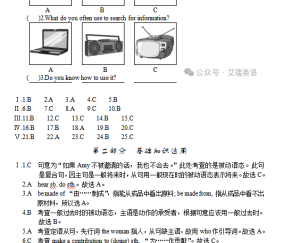
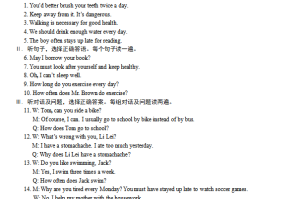


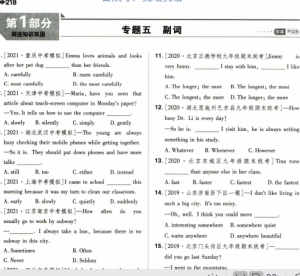
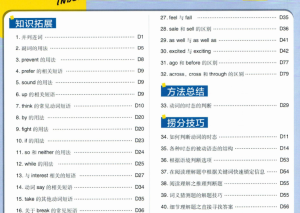
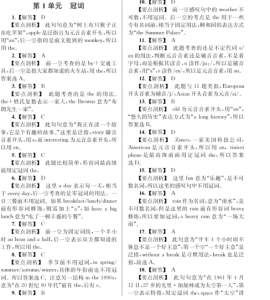
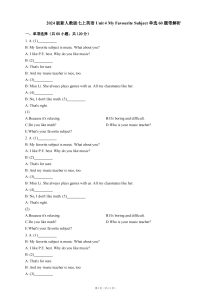



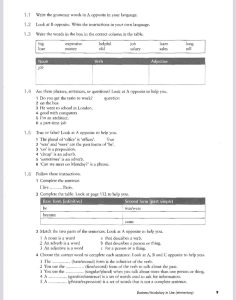
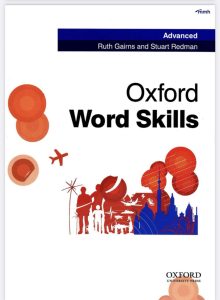

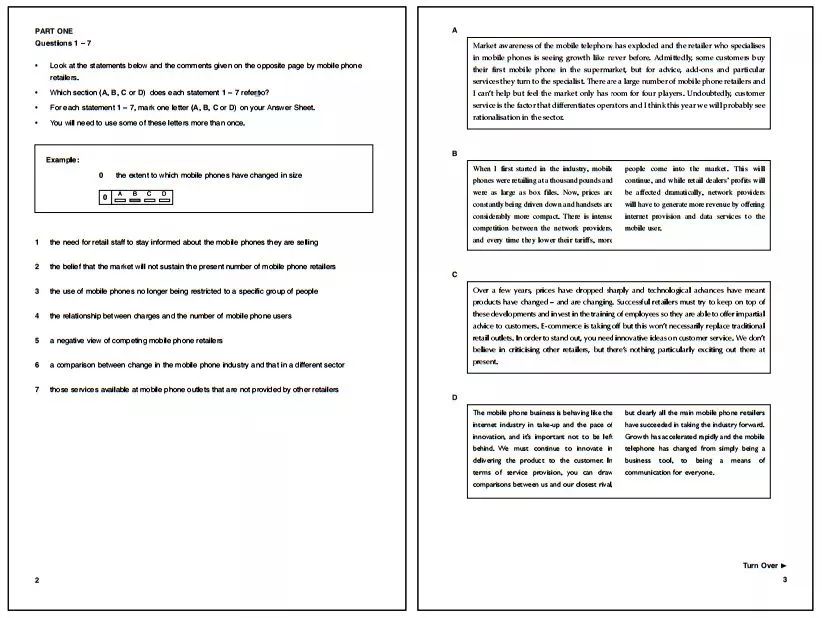


暂无评论内容